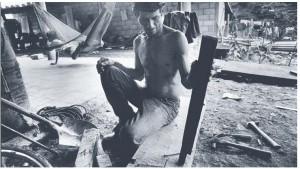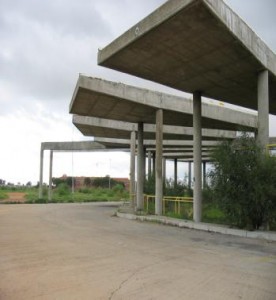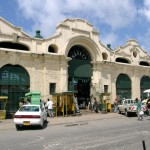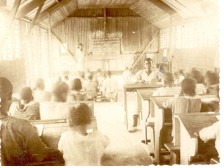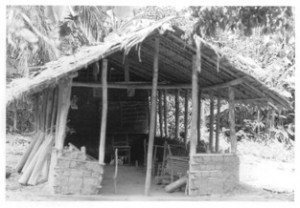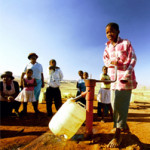El Salvador en transición
El acuerdo de paz firmado el 16 de enero de 1992 entre el gobierno y el movimiento rebelde FMLN puso fin a más de diez años de guerra civil en El Salvador. En este capítulo trataré los antecedentes de esa guerra y el desarrollo y el proceso que llevaron al acuerdo de paz. El énfasis radica en los cambios entre el estado, los partidos políticos y las organizaciones de la sociedad civil. De esta manera surge una imagen del contexto social en que nacieron las organizaciones de ayuda para el desarrollo y del espacio donde estas organizaciones intervinieron. Para dar una imagen global del contexto histórico de la guerra civil, me adentraré primero en algunos importantes desarrollos políticos y económicos que tuvieron lugar entre 1870 y 1970. Trataré después a los principales actors en los decenios anteriores a la guerra civil. Estos eran, entre otros, los (nuevos) partidos políticos, los militares, las organizaciones paramilitares, la iglesia y los movimientos revolucionarios. Seguirá a continuación el tema de la guerra civil, en el que se prestará atención al papel desarrollado por el FMLN, los partidos políticos, el gobierno salvadoreño y los Estados Unidos. Para terminar, se tratará el acuerdo de paz. Esbozo allí los cambios principales que tuvieron lugar en base a la llamada ‘triple transición’ en El Salvador.
Una historia de exclusión
Para Torres Rivas y González Suárez (1994:12), la guerra civil fue el resultado de un largo período de exclusión social, económica y política a la que fueron sometidos grandes sectores de la población. Este proceso tuvo profundas raíces históricas y llevó en los años sesenta y setenta a la polarización y al agravamiento de la crisis en la sociedad salvadoreña. La crisis social que surgió en estos años no puede explicarse sólamente como el resultado de la influencia de los Estados Unidos o de la oposición de la poderosa oligarquía agraria a las reformas (Carrière y Karlen, 1996:368). Hubo una combinación de factores internos y externos que en los años anteriores a la guerra impidió una modernización a fondo de la política, la economía y la sociedad. La mayoría de los análisis de la guerra civil salvadoreña comienzan en la segunda mitad del siglo pasado. Este fue el período en el que se desarrollaron el cultivo y la exportación de café a gran escala. El café tuvo una influencia definitiva en las relaciones sociales salvadoreñas en gran parte de ese siglo. El cultivo y la exportación de este producto fueron la reacción ante la disminución de la demanda internacional de indigo, un colorante azul oscuro de textiles que constituía hasta entonces el principal producto de exportación de El Salvador. Las mejores condiciones para el cultivo del café se dan en suelos situados entre los 500 y los 1.500 metros sobre el nivel del mar. Una gran parte de los suelos adecuados para el cultivo del café eran propiedad comunal, entre otros de pueblos indígenas. El gobierno dirigido (desde 1871) por los liberales era partidario de la comercialización en el usufructo de los suelos y abolió la propiedad comunal de la tierra en las reformas de 1881 y 1882. Un número relativamente pequeño de familias (entre ellas las dedicadas antes al cultivo del indigo) compró grandes extensiones de tierra, dominando rápidamente la producción y el comercio del café. Read more
Awareness Is Power: Tactics For Staying Safe In Violent Spaces
Violence is everywhere (Lindiwe, Hector Peterson Residence).
In order to understand the concept ‘awareness’, Hastrup’s (1995) explanation of consciousness is invaluable, especially to identify with people’s behaviour in violent situations. She explains that our patterns of thinking are not subject to paths of practical reason, but that we rather constantly reformulate our whole existence through our actions; a reconsideration of our ideas of consciousness is thus necessitated (ibid.: 99). Hastrup reminds us that we are inarticulate and that expression is not limited to the verbal. Expression, rather, takes place in various forms (ibid.).
Given Hastrup’s suggestion to understand consciousness from multiple angles, we approach a field within which questions of ontology and methodology join: how do people think and how do we know? (ibid.; Ross 2004: 35). What tools should anthropologists use to access these forms of consciousness that are so intertwined in social space, affecting it, being affected by it and being its defining capacity? In an environment of violence, students are affected, they can potentially have an influence on this through the tactics they use to stay safe and, at the same time, can become the defining capacity of such an environment. These are among the dynamics involved in conceptualising ‘awareness’ of potential danger in potentially dangerous areas. This awareness is positioned on various levels.
From The Web – University of Oxford – Podcasts from The School of Anthropology & Museum Ethnography
Podcasts from the School of Anthropology and Museum Ethnography. The School is renowned for its contributions to anthropological theory, its commitment to long-term ethnographic fieldwork, and its association with the Pitt Rivers Museum and the anthropology of visual and material culture. Home to over forty academic staff, over a hundred doctoral students, twelve Master’s programmes, and two undergraduate degrees (Human Sciences; Archaeology and Anthropology), Oxford anthropology is one of the world’s largest and most vibrant centres for teaching and research in the discipline. It came top of the Power (research excellence + volume) rankings for anthropology in the UK in RAE 2008.
See: http://podcasts.ox.ac.uk/series/anthropology
Efficacy of Tourism as a Tool for Local Community Development: A Case Study of Mombassa, Kenya
Having unique indigenous cultures, nature-based attractions, beautiful landscapes, and pleasant weather conditions, local communities in Africa, and other Third World countries, are increasingly being promoted and marketed in major tourist generating countries, particularly in Europe and North America, as offering immense touristic and recreational opportunities. Particularly, indigenous communities in the Third World are perceived as providing abundant opportunities for rich tourists from the North who have got the financial resources to spend in adventure and exotic recreational activities. As a consequence, an increasing number of international tourists are travelling to different tourist destinations in Africa and other less developed regions of the world. In 2001 for instance, over 28 million international tourists, mainly from Europe and North America, travelled to different destinations in Africa. It is further estimated that with the current international growth rate of the tourism industry, over 77 million international tourists will visit Africa by the year 2020 (WTO 2004).
Neo-classical economists and development experts contend that unlike factor driven technology based development, local communities in Africa and other parts of the Third World have a comparative advantage in the development of tourism and other non-technology based economic sectors. The development of tourism amongst local communities is, therefore, perceived as fitting quite well with the ‘natural process of development based on comparative advantage’ (Brohman 1996). This argument is based on the premise that local communities, particularly in Africa, should mainly specialise in primary exports, including tourism, where they have comparative advantage rather than depending on technology based economic sectors that do not conform with the principles of comparative advantage in the global market demand.
When Congo Wants To Go To School – Educational Organisation In The Belgian Congo (1908-1958)
Contexts
The first part of this study will concentrate on the wider environment within which daily practice of colonial education is situated. It progresses in three stages in accordance with the aim of the research. Three chapters correspond with these three stages. The general, macro-institutional context of the phenomenon of colonial education is considered in the first chapter. This includes a discussion of the organisational development and politico-strategic factors that influenced this phenomenon. The development of the educational structures is indicated from the angle of the interaction between state intervention and the Catholic initiative. Within that framework the major themes in the content and emphasis of colonial lesson plans are also considered, as are the opinions on these subjects. Finally, figures are given to allow an estimate of the quantitative development of education in the colony. The second chapter shifts the focus to Belgium. The preparation, training, ideas and worldview with which the missionaries left for the Belgian Congo will be considered more closely. This chapter is divided into two parts. The first part considers a number of broad social and historical factors that played a part in the formation of the missionaries’ general intellectual baggage. Mainly results of existing research are presented and discussed in this part. The second part takes a closer look at the people who are of specific interest to us, covering the preparation and training given to the Sacred Heart Missionaries in Belgium and using specific source material. In the third chapter we make the journey to the Congo together with these missionaries. A number of elements are given in a short outline that also constitute the direct context of their work. Firstly, a description is given of the creation and growth of the mission region in which they were active. Then follows the introduction of the other missionary congregations, with which the Sacred Heart Missionaries cooperated. Finally, quantitative data are brought together with regard to the development of education, both for the mission region as a whole and for the various mission posts separately. Read more
When Congo Wants To Go To School – The Missionaries And The Belgian Congo: Preparation, Ideas And Conceptions Of The Missionaries
“I have been interested in the Congo all my life, because I always wanted to be a missionary in the Congo, even as a little child. And so in a way I paid some attention to it, but only the achievements of my heroes at the time – a number of family members were missionaries and the mission exhibitions, the missionary action. The Congo came to us through missionary work and it was very heroic. …I remember the moment to the minute when I discovered the background or the ‘depths’ of the colonisation of the Belgian Congo. And then I got the feeling, which I still have today, that during my training, my education, I had been deceived about the Congo.“[1]
Flemish and, by extension, Belgian missionaries left for the Belgian Congo in droves. The Statistical Yearbook of the N.I.S., which had a separate section for the colony, recorded a few tables with data about the ‘white’ population. As well as divisions on the basis of nationality, gender and place of residence, for a number of years it also included a “class division“. In this table, the population was divided into three categories: ‘civil servant’, ‘missionaries’ and ‘general public’. The presence of a separate category for missionaries points to the fact that they were very important in colonial society. On the basis of the available figures it can be posited that during the interbellum period, religious workers comprised 10 to 15% of the white population. This percentage was certainly not only men, the proportion of female religious workers was fairly stable throughout the colonial period and amounted to over 40%.[2]
